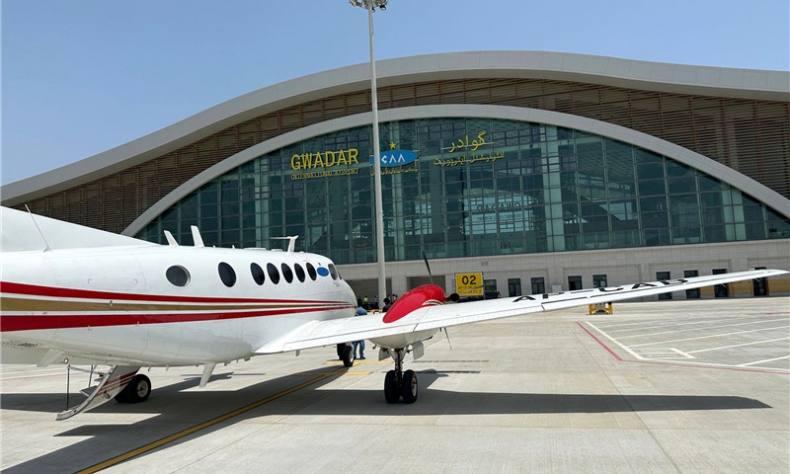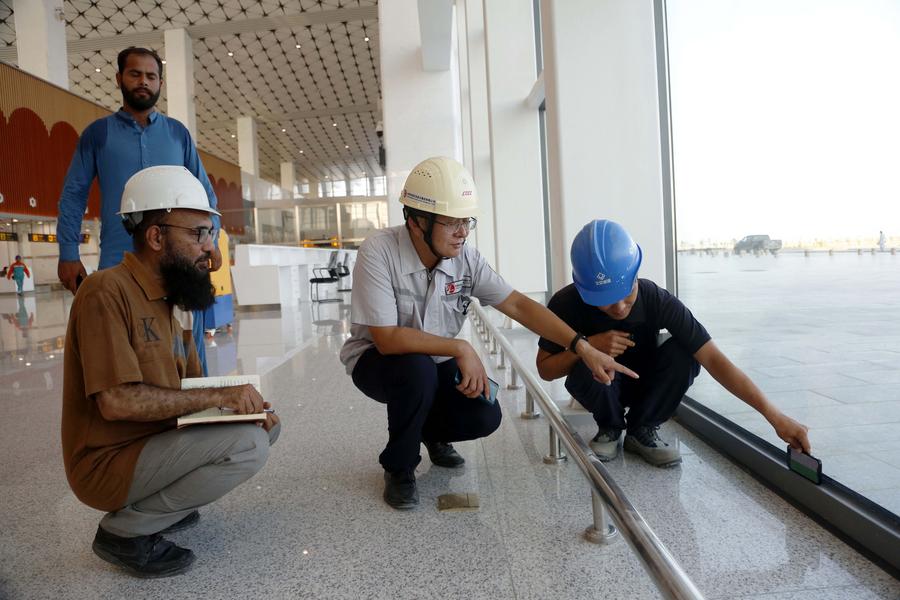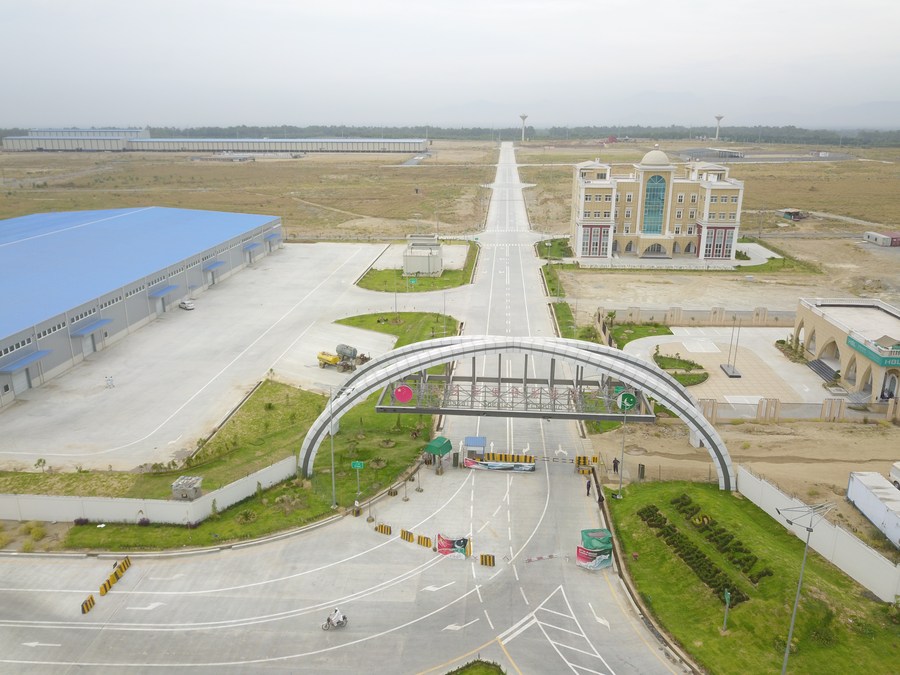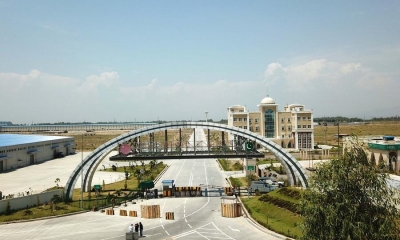Powered by BRI, New Gwadar International Airport Going to Drive Regional Development

NGIA is poised to drive economic growth in Gwadar as well as in the region given its strategic positioning and development.
Under the Belt and Road cooperation spirit, New Gwadar International Airport (NGIA) Pakistan, one of the marvels of Chinese high-tech engineering and state of art craftsmanship, is set to be operational and open to the public in January 2025. The new airport stands for an effort to revolutionize air connectivity of the Belt and Road.
As per arrangements, the first commercial Chinese passenger plane will fly from China and land at New Gwadar International Airport recently inaugurated by Chinese Premier Li Qiang during his 4-day Pakistan visit along with Pakistan Prime Minister Shahbaz Sharif.
As a testament to the bilateral cooperation on the China-Pakistan Economic Corridor (CPEC), NGIA is poised to drive economic growth in Gwadar as well as in the region given its strategic positioning and development.
An iconic project of CPEC
One of the most notable features of Gwadar International Airport is its state-of-the-art landing system, representing a pinnacle of modern aviation technology. Engineered to accommodate large aircraft like the Airbus A320 and Boeing 737, this advanced system ensures smooth and secure landing of flights, reinforcing Gwadar’s position as a hub of innovation and progress in the aviation realm.
As a President of Institute of International Relations and Media Research (IIRMR), I paid a visit to NGIA and witnessed the picturesque architecture’s elegant exterior & interior and the splendid main facade of building involving departure and arrival gates for international and domestic flights.
The new airport is a symbol of bewitching splendour that features a bird-shaped building structure, eye-catchy lounges, airy and lit-up refreshment areas, boarding spaces and seating arrangements. Clean and shiny flooring set the mood cheerful prompting to fill eyes with state-of-the-art beauty that testifies to the craftsmanship of designers and engineers.
Endowed with certifications like the global aerodrome category C and equipped with front-line landing systems, the NGIA embodies efficiency, safety, and innovation in air travel. Seeing is believing. NGIA’s construction craftsmanship gave a serendipitous experience prioritized by mindfulness, diversity and inclusion, and convenience.

The major stressors at airports are typically the inability to control one’s environment or understand what’s expected at the airport, the stress of meeting the time, and the generic stress of the crowds and noise. NGIA design can ameliorate all these issues.
Inclusivity, respect for cultures and a specific seating environment appear catered well at the airport considering the 24-hour operating schedule.
Hopefully we will see bustling lounges, lively bars, restful nooks, interesting shopping, active play areas and comfortable areas to gather soon.
The inside system of the airport allows travelers to navigate with convenience using clear signage, sight lines, way-finding systems, and intuitive layouts to simplify the travel experience.
Incorporated technology throughout the airport will improve the user experience, such as interactive kiosks for check-in, digital signage, and automated baggage handling systems.
The ceiling design, as well as the skylights and vertical openings, guarantee natural light access during the day, which creates an interesting effect in terms of spatiality.
Situated 26 kilometres east of Gwadar City, the airport is linked to the city and the national highway network by the East Bay Expressway, a six-lane, 19-km roadway funded by China. This connectivity is vital for seamless logistics and trade facilitation.
Spanning 4,300 acres, the airport includes a runway capable of accommodating large aircraft, alongside a modern terminal building covering 14,000 square meters. NGIA symbolises a significant milestone in Pakistan’s aviation sector and underscores the enduring partnership between China and Pakistan in driving regional development.
In a significant development, the Civil Aviation Authority (CAA) Pakistan has bestowed Gwadar International Airport with the prestigious certification of a global aerodrome category C. This certification underscores the airport’s capability to manage landings under diverse weather conditions, instilling confidence in the safety and efficiency of its operations.
Collaborated by China Airport Construction Group Co., Ltd. and CAA Pakistan, NGIA consists of 32 components like state-of-the-art runway, aprons, a terminal, along with civil, technical, electrical and communication infrastructure and the rest of modern allied facilities.
A high-tech navigational system has already been installed and functional at the airport, ensuring full operation of sensor and signaling processes, aeronautical positioning mechanism and flight management systems.
It helps to calculate the flight parameters, recommend the power settings, to reduce fuel consumption and to show the expected arrival time within the route,” Civil Aviation Authority of Pakistan official said. Along with the functionality of Navigation system, telecommunication work has also gone into operation with a top-notch wifi system.
NGIA’s state-of-the-art telecommunication paraphernalia involves telecom networks and systems that use various technologies and protocols to facilitate the transmission of voice, data, and audio-video signals between devices, including smartphones, computers, and other communication devices.

A new driver for local and regional development
“Equipped with BRI’s spirit of inclusive connectivity with state-of-art airway features, China-aided New Gwadar International Airport (NGIA) is going to serve as a dynamic precursor for spin-off effects on development horizons of Gwadar as well as Balochistan,” Khalid Ahmed Baloch, local trader doing hotel business in Gwadar said.
Owing to its geostrategic and geo-economic position, NGIA is also set to furnish a positive role in boosting international trade. It will create a crucial link between businesses and various global markets, greatly expanding their potential customer base.
Many industries use air transport to support their ‘just-in-time’ production processes, providing flexibility in the supply chain and cost savings by reducing the need for large inventories. The NGIA stands prepared to meet such trends.
A well-connected airport significantly promotes infrastructure and real estate growth. Demand for housing, offices, and commercial spaces near airports surges, leading to a boom in real estate development. NGIA will play a significant role in inspiring diverse enterprising businesspersons, especially stakeholders in the property market.
Meanwhile, the economic impact of NGIA also goes beyond its immediate boundary. Local businesses like hotels, restaurants, vehicle rental agencies, and taxi services will benefit significantly from NGIA’s presence resulting in more job opportunities and higher wages in these sectors.
Also, the growth of nearby developments like hotels and commercial centers boosts the construction and real estate sectors, leading to more jobs for construction workers, architects, engineers, project managers, and related professionals. The job prospects stemming from airports usually offer attractive pay packages and benefits, enhancing living standards within the community.
Consequently, this stimulates domestic spending, thereby strengthening the overall regional economy in Balochistan. NGIA will also help improve the labour market by making it easier for companies to attract high-quality employees from around the globe.
The article reflects the author’s opinions, and not necessarily the views of China Focus.
 Facebook
Facebook
 Twitter
Twitter
 Linkedin
Linkedin
 Google +
Google +







